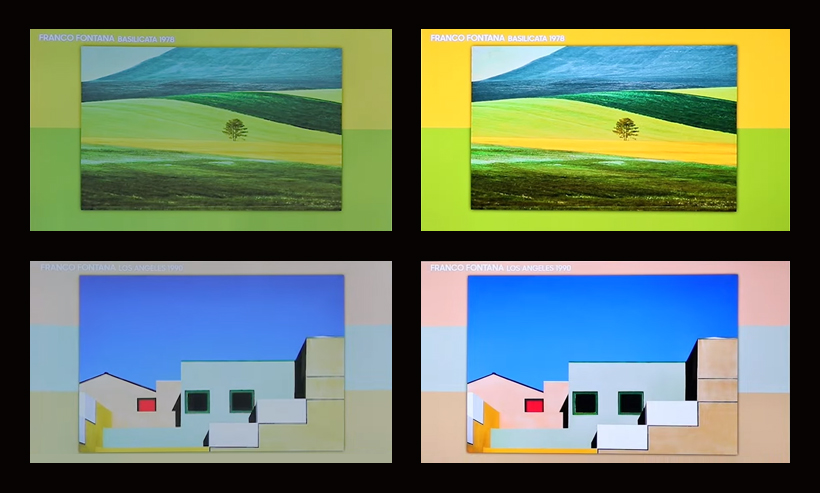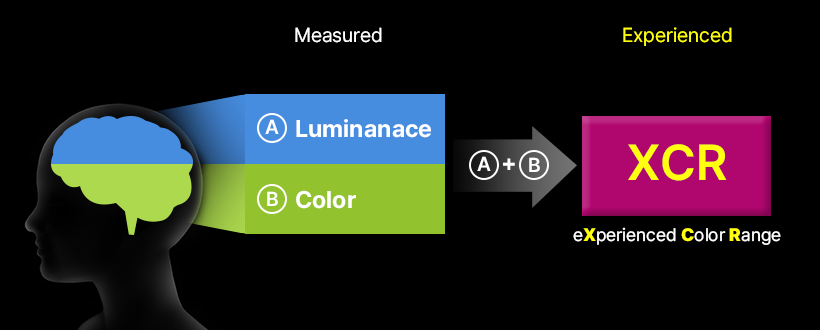
XCR (eXperienced Color Range) is a metric designed to gauge the brightness of a screen as perceived by the human eye. To better understand the factors influencing screen brightness, let's dive into the concept of luminance—a term frequently referenced in discussions about display brightness. Luminance relates to the brightness of a display or light sources. It serves as a key benchmark for display performance because a brighter display enhances the clarity of images or videos on a screen, especially in sunlight or outdoors. Luminance specifically denotes the brightness per unit area of a light-emitting object, measured in candelas per square meter (cd/㎡) or nits (nit), with one candela representing the brightness of one candle. However, relying solely on luminance does not provide a comprehensive understanding of the intricacies of our visual experience when consuming content. This is where the concept of XCR (perceived luminance) becomes relevant.

The above photos showcase the artistic creations of Italian photographer Franco Fontana, renowned for his mastery of color photography. The images are displayed on two distinct TVs. Although the brightness of the photos on the left and right appears to differ, it is surprising to note that the luminance levels on both TV screens are actually set to the same level.

This seemingly deceptive phenomenon becomes more apparent in the color-coded image above. In this image, the red circle on the left and the purple circle on the right may appear to be the brightest, but in reality, the luminance remains consistent across all five colors. The discovery of this phenomenon dates back to 1860 when German physicists Hermann Ludwig Ferdinand von Helmholtz and Friedrich W. Georg Kohlrausch first observed that humans perceive brightness differently. They found that this perception is influenced not only by luminance but also by the type of color and its chroma, which represents how vibrant or muted the color appears.

In 2022, the Munsell Color Science Lab at the Rochester Institute of Technology in the United States, with support from Samsung Display, conducted a brightness study. This study took into account the H-K (Helmholtz-Kohlrausch) effect and concluded that perceived brightness, quantified by considering the H-K effect, better reflects the characteristics of the human visual system than conventional brightness expressed by luminance alone.
The introduction of the XCR concept revolutionizes display brightness measurement. This innovative approach tackles the shortcomings inherent in relying solely on luminance-based measurements and is founded on the principles of the H-K effect.
XCR is expected to introduce substantial changes to various processes involved in the design, development, and evaluation of displays. With the growing significance of presenting high dynamic range (HDR) image quality in various mediums such as games and movies, the expectation is that XCR will not only enhance perceived performance by incorporating XCR considerations from the outset of display development but will also establish guidelines to ensure consistent brightness experiences for users across different display devices. This spans from smartphones and laptops to XR, medical devices, and beyond.



